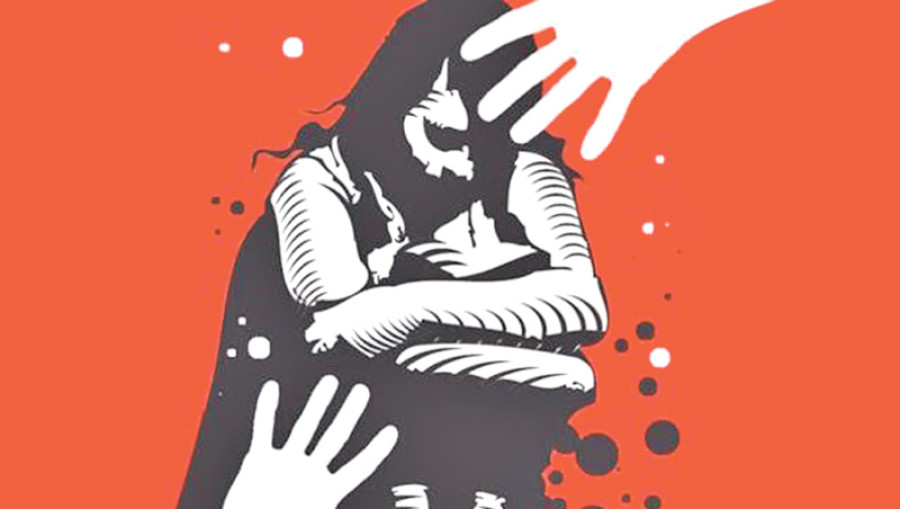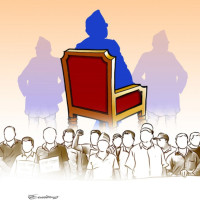Opinion
Safe education for all
Women’s organisations and activists worldwide have been celebrating 16 Days of Activism as a global platform to advocate for women’s rights.
Renu Adhikari Rajbhandari
Women’s organisations and activists worldwide have been celebrating 16 Days of Activism as a global platform to advocate for women’s rights. November 25 was declared an international day calling for an end to Violence against Women (VAW) to commemorate the death of three sisters—Patria, Minerva and Maria Mirabal of the Dominican Republic—who were detained, tortured and assassinated in 1960 during the dictatorship of Rafael Trujillo. This year’s theme for the 16 Days of Activism campaign is ‘From Peace in the Home to Peace in the World: Make Education Safe for All’. The state is obliged to create a safe environment for women to learn. However, in Nepal, structural inequalities persisting in the form of discriminatory laws and policies, as well as patriarchal attitudes and deep-rooted stereotypes, continue to affect women’s education.
The dropout rate for girls from formal education still remains high. While lack of toilets in schools has been cited as a key reason, this is the outcome of pervasive discriminatory values and practices throughout the country. In this context, it is not an exaggeration to say that VAW is again an outcome of the same root, and is the key cause behind a lower literacy rate among women and a high dropout rate among girl students. According to the latest Unesco data, the female literacy rate in Nepal currently stands at 55.11 percent, which is more than 20 percentage points behind the male literacy rate. VAW continues to persist, in direct contradiction to women’s rights to live a life free from violence; and worryingly, a large percentage of this violence affects girls.
There is an increasing number of VAW cases in family and public spaces, and despite child marriage being illegal, 37 percent of girls are married before they reach the age of 18. In 2016, about 43 percent of the rape cases documented by the Women’s Rehabilitation Centre (WOREC) affected girls under 16, and this is only the tip of the iceberg. This has a profound impact on girls’ right to education. Girl survivors of any form of violence who are required to stay in state-run safe houses are forced to abandon their education due to lack of policies.
This amounts to another way of punishing young affected women for the crime which someone else committed against them.
Mental health
According to Anbeshi 2015 yearbook, 52.2 percent of rape survivors were girls under 18. Violence has far-reaching consequences, with 52 percent VAW survivors reporting adverse effects on their mental health. Health problems caused by gender based violence also prevent girls from being able to enjoy safe education. Besides this, sexual violence, rape, domestic violence and dowry-related torture perpetrated against girls of school-going age also leave deep psychological scars. Different studies show that suicide rates are increasing among Nepali women. These are quite troubling facts and trends which should not be tolerated.
Women are trapped inside a tight sphere of social regulations, and are driven to suicide by their secondary status within families and communities. Women have restricted access to healthcare services. There are almost no facilities for women to share what they are going through with any medical professional. Coupled with the trauma many women experienced during Nepal’s long-running conflict, the unavailability of a functioning mental health support system is playing a key role in increasing suicide rates among women of reproductive age.
Undocumented and unpunished
Women are also barred from receiving substantive justice. Justice ensures dignity, safety and self-worth. However, the current definition of justice is limited to legal justice, which for women is inadequate. In some cases, women receive justice in a legal sense when they gain custody of their children after a divorce, for example. But in reality this justice is compromised as women are often expelled from their communities as a consequence. In this way, Violence against Women remains undocumented and unpunished, and women rarely feel that they have fully received justice.
Exposure to violence limits a woman’s ability to earn an independent living and participate in the public sphere. Discriminatory legislation bars women from owning productive resources, working freely and being a part of the labour force. According to the International Labour Organisation (ILO), women comprise 52 percent of Nepal’s population, but they own only 20 percent of the land. Girls receive less schooling than boys which limits their job options. Legislation that places age restrictions on women’s migration and the government’s discussion of women’s mobility in patriarchal and protectionist terms has forced women to migrate clandestinely to find work. As a result, a large number of women migrant workers face vulnerability to various forms of exploitation, forced labour and abuse.
Ensuring justice
Women have been ignored in the effort to rebuild the country following the earthquake. With their homes and livelihoods lost, they are placed in a vulnerable position that increases the likelihood of being exposed to trafficking and further violence. Furthermore, while the President of Nepal, Speaker of Parliament and the Chief Justice of the Supreme Court are all women, there is still an extremely low representation of women, particularly Dalit and indigenous women, in high-level decision-making positions. Structural transformation is needed to make women’s equal participation a reality, and Safe Education for All must become a reality, not a mere slogan.
Figures show that government efforts so far have been inadequate to ensure women’s right to live without violence and discrimination. This is contrary to its obligations enshrined in international law, the Sustainable Development Goals (SDG), and the Convention to Eliminate all Forms of Discrimination against Women (CEDAW). SDG 1 calls for the elimination of poverty, and cites the social discrimination present in education and in women’s participation in decision making as factors that perpetuate poverty. SDG 4 calls for ensuring equal and inclusive education to promote lifelong learning opportunities for all. SDG 5 emphasises gender equality where women and girls must be provided equal access to education, healthcare, decent work and representation in political and economic decision making.
Likewise, SDG 8 requires governments to promote sustained, inclusive and sustainable economic growth with full and productive employment and opportunities for all. SDG 16 calls for governments to promote peaceful and inclusive societies, access to justice for all and accountable and inclusive institutions at all levels. Towards this end, the UN and its member states need to come forward to change the system structurally. This can be done only by adopting redistributive, economically just and socially gender-sensitive and environmentally sound development models that are accountable to the people.
Therefore, there is an urgent need for us to call for the elimination of discrimination against women to ensure justice. The SDG framework provides an opportunity for the government to make structural changes. However, there is also an urgent need for civil society to review the approach of work and actions. Civil society should lead the fight against gender stereotyping as proper justice can’t be ensured without changing the people’s mindset. And government policies alone can’t change this. Only when all stakeholders call to ‘Ensure Justice and Eliminate Discrimination by Addressing Structural Inequalities’, the slogan ‘Make Education Safe for All’ can possibly be carried out.
Rajbhandari is president of Women Rehabilitation Centre




 18.12°C Kathmandu
18.12°C Kathmandu










